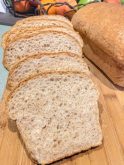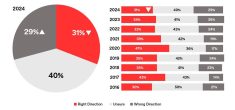This summer, after torrential spring rains left oceans of standing water in ditches and fields, the evening air in many places seemed to vibrate with mosquitoes, especially when the humidity was high.
At times like that, especially when you’ve got tools in both hands and no means of defence, there’s nothing more satisfying than to hear the rattle of dragonfly wings as the little biplane-like critters descend from the heavens above for a high-speed interception.
SINISTER REPUTATION
It’s hard to believe then, that dragonflies used to be seen as sinister, with folk names like the “Devil’s darning needle.” In Norway, they were called the “oyenstikker,” which literally translates as “eye poker.”
Read Also

Mazergroup’s Bob Mazer dies
Mazergroup’s Bob Mazer, who helped grow his family’s company into a string of farm equipment dealerships and the main dealer for New Holland machinery in Saskatchewan and Manitoba, died July 6 from cancer.
But in Japan, they are a symbol of courage, strength and happiness, and often appear in poetry.
To some native American tribes, they represented swiftness and accuracy. In Indonesia, they are captured on sticky poles and deep fried as a snack.
“Odonatists,” or dragonfly enthusiasts, collect them, much like butterfly hunters.
Jim Duncan, manager of biodiversity, habitat and endangered species with the Manitoba Wildlife and Ecosystem Protection Branch, said that with the help of some 300 volunteers, the dragonfly survey underway since 1999 has identified 11 more species in addition to the 89 that were already known.
“So that’s about 100 species that are known to occur here,” said Duncan.
MYTHICAL MOSQUITO CONTROL
There is a lot of interest in dragonflies as a potential for natural mosquito control, but unfortunately, it is largely a “myth,” he said.
“I hate to burst the bubble, but in any healthy ecosystem, your predators, which in this case are dragonflies, never really overwhelm or control or limit the number of their prey to the point where they are eliminated,” said Duncan.
“There might be in rare cases where a small area for a few days might be mosquito free if there is an intensive hatch of dragonflies.”
Dragonflies in the aquatic stage of their life cycle – which for some lasts up to four years – are voracious eaters of mosquito larvae and other bugs. When they become airborne, they eat virtually all flying insects, from horseflies, deerflies, moths, butterflies and of course, mosquitoes. Different species of dragonflies live for a few weeks or months. Some, like the green darners, live up to a year and even migrate en masse to southern climes like wintering butterflies.
DIVERSITY
Tormented souls often ask him, “‘Why are there mosquitoes? What purpose could mosquitoes possibly have?’” he said, adding that he occasionally gets calls from people wondering where they can buy dragonflies to release in their yard to get rid of mosquitoes.
But even if you could order them in quantities from an entrepreneur, the effort would likely be in vain.
More effective, he said, would be to create an environment around your yard that would provide ample niches for species diversity, including birds and minnows.
The truth is, mosquitoes are food for all those critters, and as the saying goes, you can’t have one without the other.
Being patient early in the season will pay off later as growth in the predator population bell curve catches up and overtakes the skeeter population.
“That’s the time-lag response between predators and prey,” said Duncan. “Every little bit helps to lower the amplitude of the mosquito bell curve.”
At his own property in the Interlake, there’s a woodlot and two small slough ponds. As an experiment, he set up a propane-based mosquito trap, but doesn’t spray any chemicals.
“We have a healthy bird population and a healthy dragonfly population,” said Duncan. “We have a healthy mosquito population, too, but the overwhelming community of predators means that the mosquito population gets knocked back over time.”
Identifying dragonflies can be done with a home computer and flatbed scanner. First, catch the critter, put it in the refrigerator for an hour to cool down until it becomes groggy, then gently scan it wings down just like a photo.
The dragonfly can then be released unharmed, and the images sent via email to experts to find out their names.
The province recently hosted a national assessment of the conservation status of dragonflies in Canada which aimed to advance the biological knowledge of the species.
The Oak Hammock Marsh Interpretive Centre also hosts an annual Dragonfly Festival, which ran from July 24-25 this year. [email protected]
———
“We have a healthy mosquito population, too, but the overwhelming community of predators means that the mosquito population gets knocked back over time.”
– JIM DUNCAN


















